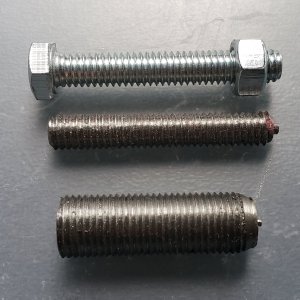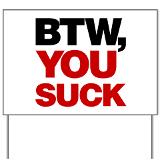David,
I love your progress, which in some ways mirrors mine, although you're more adventurous in big gulps than I.
I'm hoping you won't mind my joining your thread here, no pun intended, but my issues are square in the same subject. My threading is also getting a lot better, using HSS on 12L14. I had good success this past weekend with 1/2-20 and then 5/16-18. Didn't, of course, have a nut to match to the 1/2-20 (duh...), but did for the 5/16-18 (top picture is Home Depot nut/bolt. Got very close to finished, measured with wires, and then lost track of my cross-slide location and couldn't get it back right, so it got messed up.
I definitely have the litany of threading down, and it's fun.

The main issue I'm having now is real estate, my eventual goal being making small threads on soft material. I'm working towards the headstock, with a dead center holding things still, and there just isn't enough space to hold the work and position the tool; particularly so when using the wires...there's just no room for both of my hands, the wires, and a micrometer! I think I need to have more centered length, with the threaded portion somewhere in the middle, and a relief groove at both ends. I'm quite comfortable working in close to the chuck at these speeds, at least so far.
Any comments or tips would, of course, be appreciated. Looking forward to my next session, probably next weekend.
Thanks!
Tim




